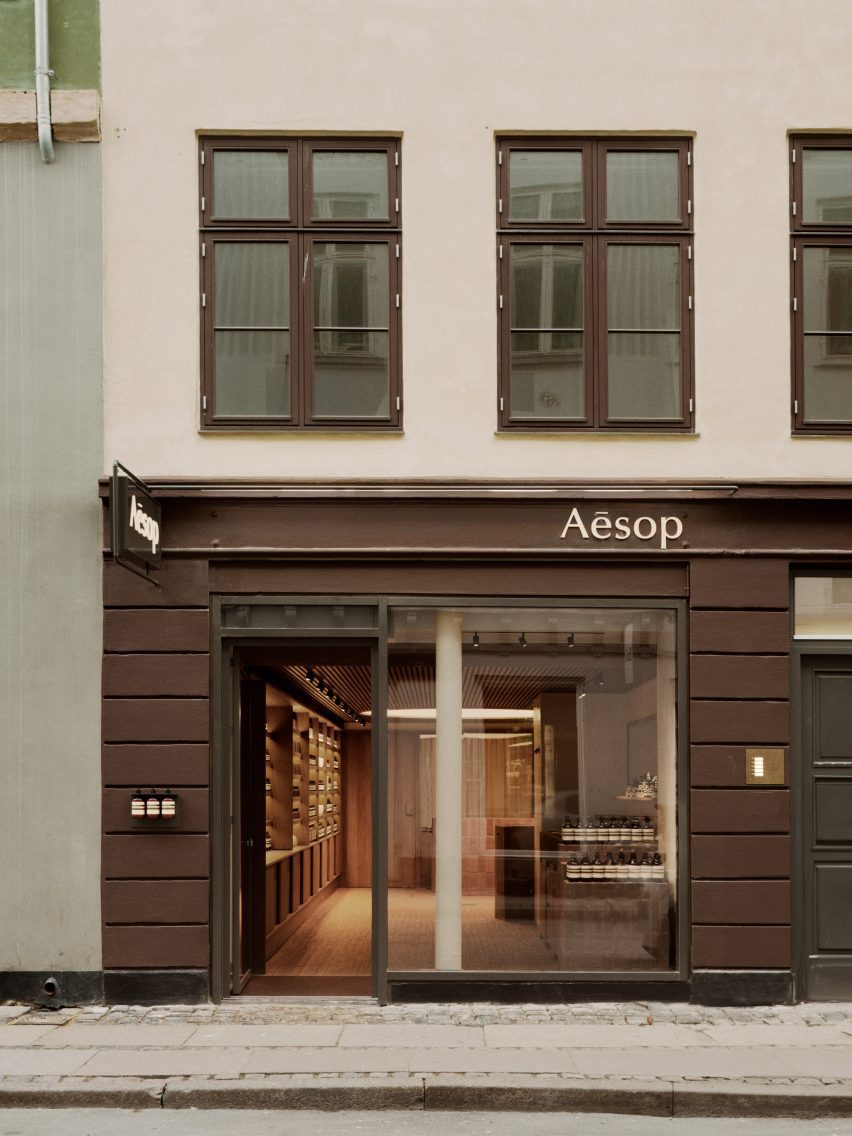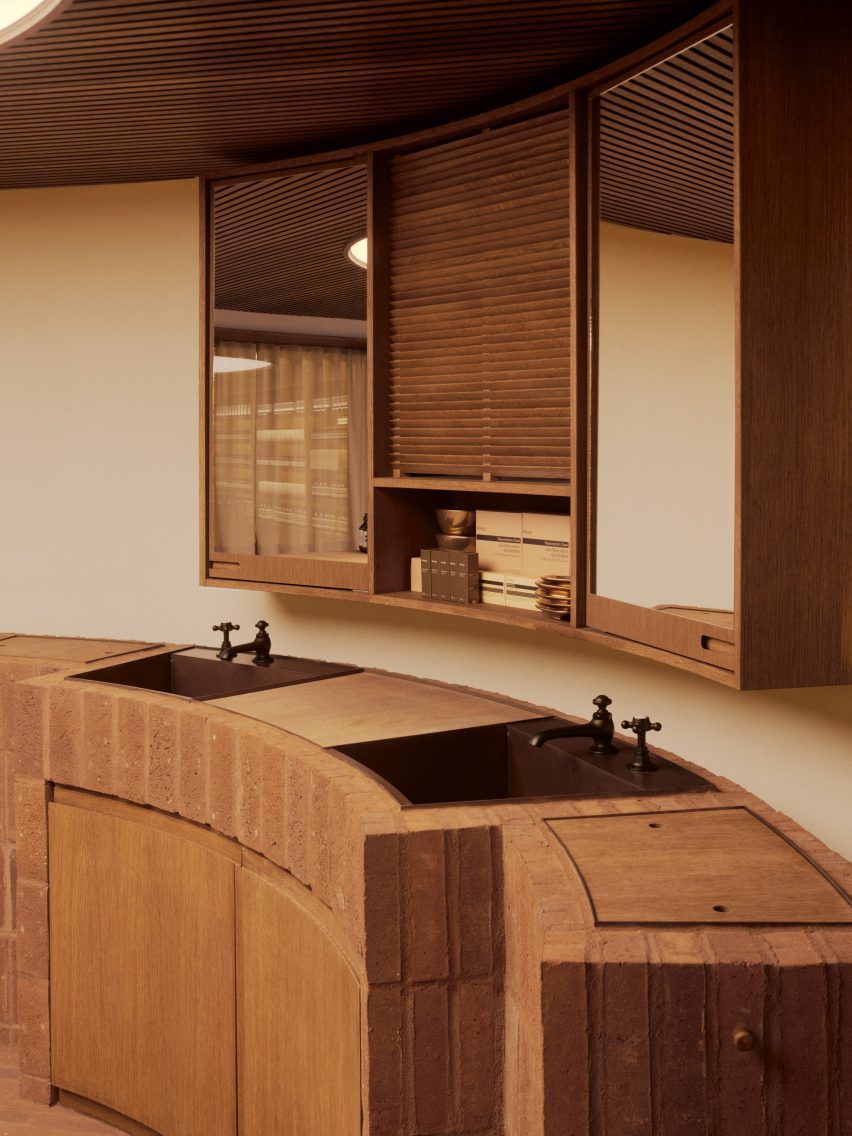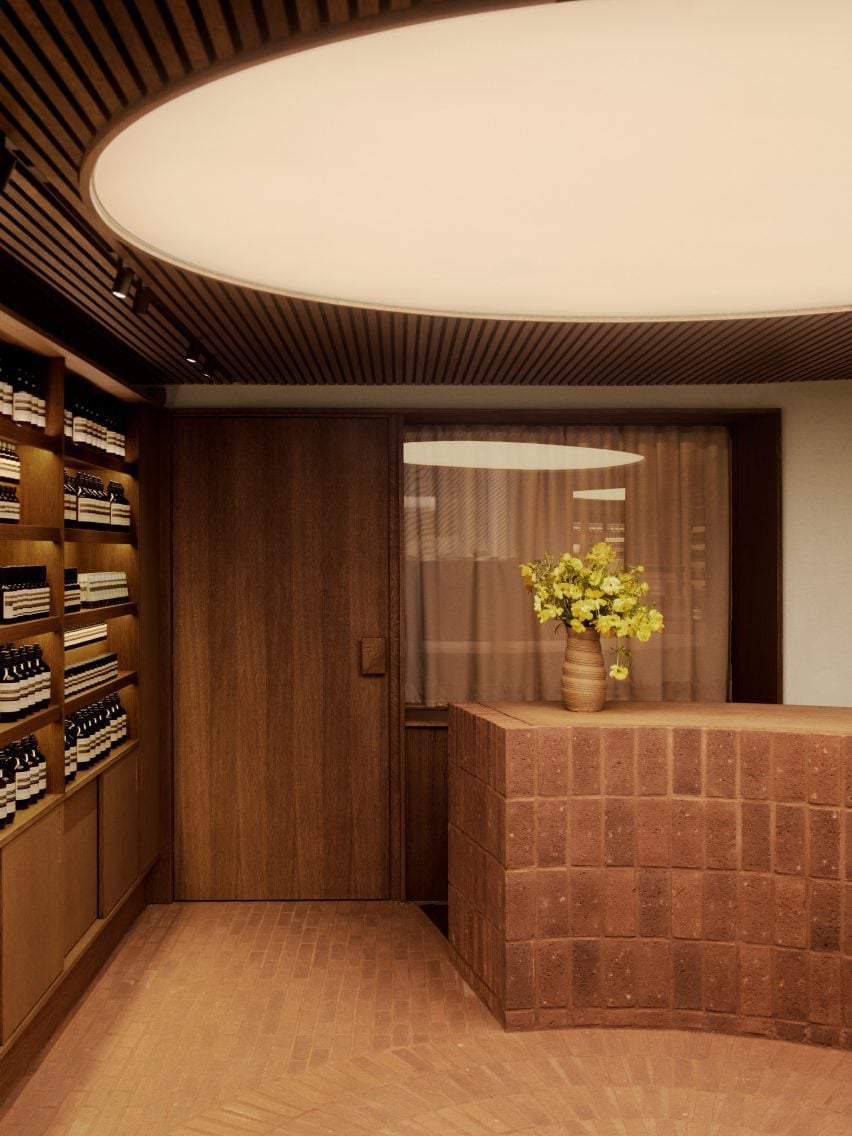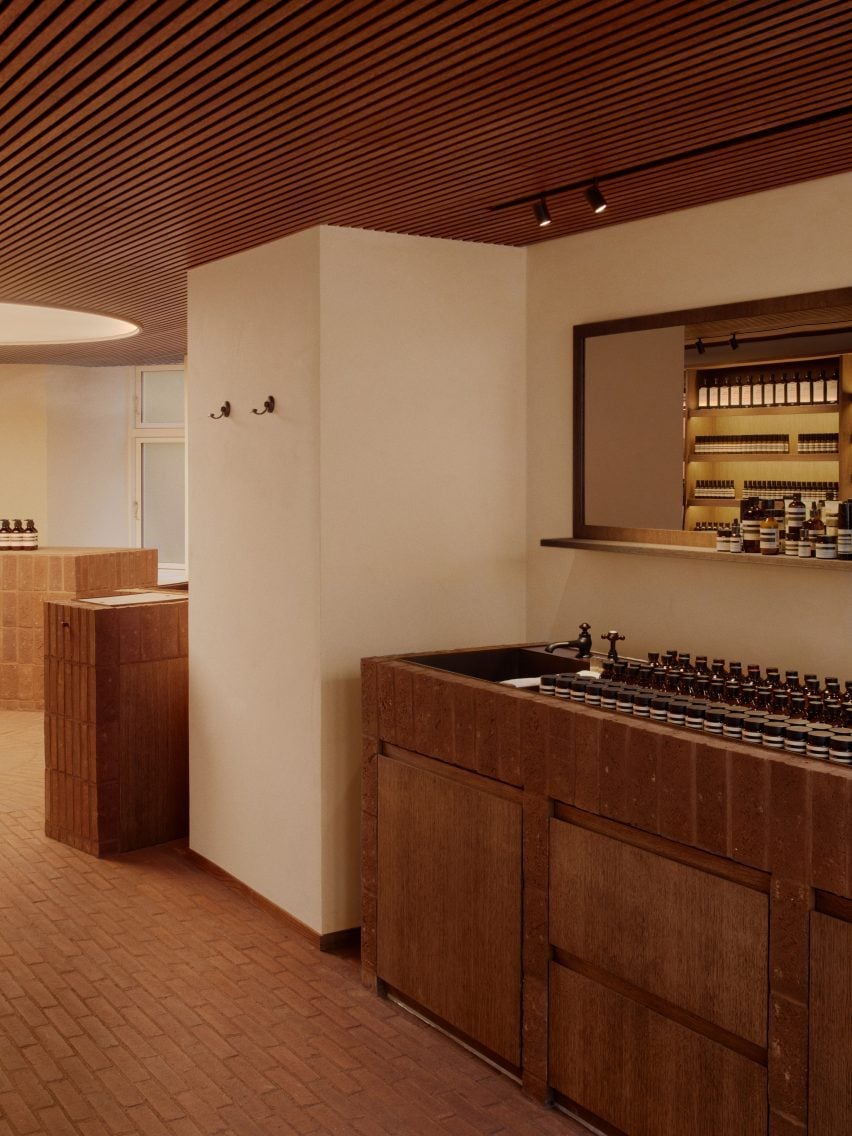The Danish bricks and narrow floor plan of this Aesop store in Copenhagen reference the “humble” design of the nearby Louisiana Museum of Modern Art.
Located on Kronprinsensgade in Copenhagen’s Old Town, the neutral-hued store was created by the skincare brand Aesopthe in-house design team to complete its framework without “unnecessary frills”.

The interior is inspired by the architecture of the famous Louisiana Museum of Modern Artcompleted in 1958 in Humlebæk, 35 kilometres north of the Danish capital.
A long, rectangular room with a low ceiling forms the store, which includes a circular space at the rear with a curved, brick-lined pool.

This floor plan reflects the museum’s “discreet horizontal building” with its thin glass corridors, according to Marianne Lardilleux, Aesop’s head of store design.
“We were attracted to the Louisiana Museum because it was designed as a home for Danish modern art rather than international,” she told Dezeen.

Tiles of Danish red brick were laid on the floor by local stonemasons, arranged in a “radiating” pattern reminiscent of several Copenhagen landmarks, according to Lardilleux. These bricks replaced the store’s original painted concrete floor.
Stained oak wood has been used to create sleek geometric shelves, which run the length of one wall and provide a gallery-style display unit for neat rows of Aesop products.
This material was also applied to the ceiling, characterized by wooden slats interrupted only by an oversized, backlit circular opening above the brick-lined basin with aged brass elements.
A smooth wooden door leads to the back of the house, hidden behind a sand-colored curtain.
“The emphasis is on the warmth of the materials,” explains Lardilleux.
“At the museum, the modest materials used – brick, wood, white paint – come together in simple but striking ways. At Aesop, we hope to design spaces that have a similarly direct approach.”

“Just as every work of architecture is connected to its site and context, every Aesop store is sensitive to its environment,” the designer added.
“We don’t seek to reproduce identical interiors: our environment has always inspired us.”
Since designing the first Aesop retail outlet in St Kilda, Melbourne in 2003, the brand has opened hundreds of stores around the world that adapt to their surroundings.
Recently, architect Jakob Sprenger installed 1920s plaster medallions above a sculptural sink in the center of a Paris store, while design studio Odami chose mint green interiors for a Los Angeles location.
Images courtesy of Brian Buchard.